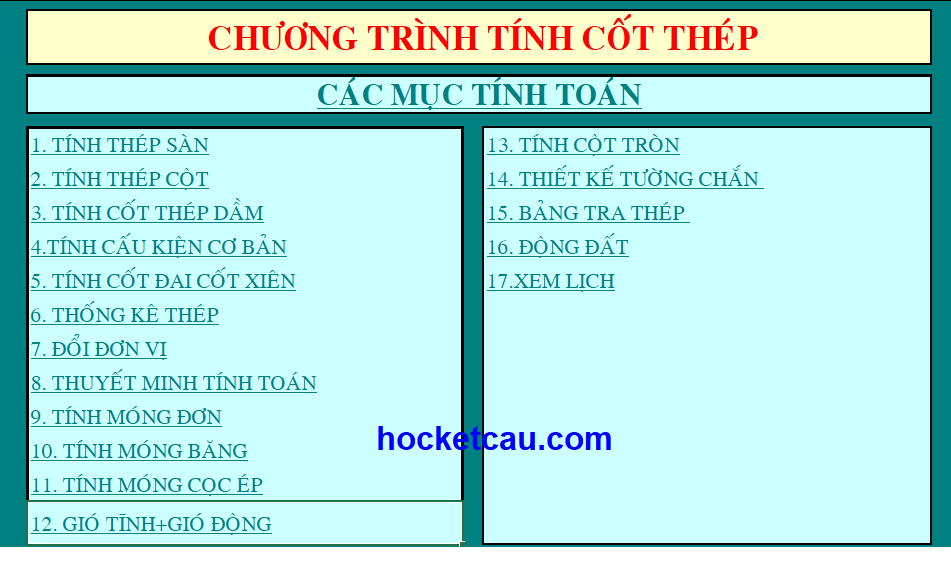LS command lists records and directories in Linux and Unix systems. Other than itemizing the records and directories, you need to use this command to get extra details a few file or directory. This information consists of who owns the file, measurement of the data, permissions given to the file, and even the time of the creation of the file.
In considered one of our a quantity of articles about itemizing recordsdata employing the favored ls command, we included tips on how to record and type recordsdata by final modification time in Linux. In this brief useful article, we'll current more than a few helpful ls command choices to record all the recordsdata in a specific itemizing and type them by file measurement in Linux. If you employ each the -h choice and the -l option, this makes the file measurement 'human readable', i.e. displaying one factor like 5.3Kinstead of 5369. The -h choice modifications the best means file sizes are displayed. When you employ the -h option, recordsdata sizes are displayed within the human-readable format of kilobytes, megabytes, and so on, other than in uncooked bytes.
Other linux instruments corresponding to df additionally assist this flag. The command df -h exhibits present disk utilization in a more straightforward to examine format. Unix and Unix-like working methods preserve the thought of a present working directory, that is, the place one is at present positioned within the hierarchy of directories. When invoked with none arguments, ls lists the recordsdata within the present working directory. If an additional listing is specified, then ls will listing the recordsdata there, and actually the consumer might specify any listing of recordsdata and directories to be listed.
This doc explains how listing and file permissions on a UNIX or Linux machine are set and may be modified by the user. This permits you to share data or directories or to lock them right down to be private. If you're logged onto a Linux field operating an Xsession you need to use the Windows Explorer equal for Linux with both the nautilus or konqueror commands.
Otherwise, this doc gives a full rationalization of how the UNIX command chmod works. In this article, we're going to discover ways to make use of the Linux ls command in Linux. Basically, ls command is a primary command in Linux used to List records and directories. The LS -L command lists records and directories along with further info like permissions, owner, date of creation, etc. Let's examine the graphic under earlier than attending to each column and info presented.
Du is a low-level Linux/Unix program which enables an consumer to get a abstract of how a lot disk utilization has been utilized by recordsdata and directories. Like every different commonplace Linux programs, the consumer can reap the benefits of many possibilities or flags with du to switch this system output. Du can even show file sizes and directories in a recursive manner.
We know that the Linux system is made up of recordsdata and directories. At any stage, at the same time engaged on the Linux command mode you might have considered trying to listing all recordsdata and subdirectories within the directory. There are some methods to listing the contents of the directories in our Linux system. In this article, we'll talk about about what are the command and alternatives which might be used to listing directories within the Linux system. You can use ls to additionally listing the content material material of all of the subdirectories through the use of the recursive option.
There are additionally just a few different command-line instruments you should use in Linux and different Unix-based working systems, which include macOS to listing documents and folders recursively. The instruments produce the output barely differently, so it is advisable to select the one best suited to your need. You can type the itemizing by extension, file size, or modification time. These choices don't have for use with the lengthy itemizing format, however it surely always is sensible to do so.
If you're sorting by file size, it is sensible to see the file sizes within the listing. When you're sorting by extension type, the lengthy itemizing format isn't so important. N is to match string numerical worth and r to reverse the end result being displayed. In each working system, we've hidden recordsdata and folders that aren't displayed even with the LS -L command.
Unless you've got enabled the "show hidden recordsdata feature." In Linux systems, hidden recordsdata are people who begin with a dot(.) letter. The LS -A command lists all data, together with hidden recordsdata (dot-files). The ls command doesn't analyze file sorts by content, however works with file names. There is, however, a command choice which could record recordsdata by extension. If you add the -X option, ls will type recordsdata by identify inside every extension category.
For example, it can record records with out extensions first adopted by records with extensions like .1, .bz2, .c and so on. The ls command is used to record records or directories in Linux and different Unix-based working systems. Ls is used on Linux and different Unix-like working methods to record details about files. When invoked with none arguments, ls will record records within the present working directory. Everyone who's spent it slow employing the Linux terminal is aware that, by default, ls lists the records and directories within the present directory. In computing, ls is a command to record notebook records in Unix and Unix-like working systems.
Ls is specified by POSIX and the Single UNIX Specification. In different environments, reminiscent of DOS, OS/2, and Microsoft Windows, related performance is presented by the dir command. The numerical computing environments MATLAB and GNU Octave incorporate an ls operate with related functionality.
Later, I would gain knowledge of different iterations of this most elementary command. Through the ls command, I all started to study the complexity of the Linux file permissions and what was mine and what required root or sudo permission to change. You can reverse the results of assessment by typing type command -r. An possibility referred to as type command -h compares human readable numbers with these of an automatic format.
I'll present the primary 10 strains with command head –10 OR -n 10. On a number of occasions, you'll should determine what permissions a consumer has for a file or folder. When you log in as "root" you've got full entry to any file that you just want, however as a typical user, that isn't the case. We can discover the complete listing of records with the "-l" option. Since I'm on a full entry system, I don't should fret about file permissions however you can actually run the next command to see what sort of entry you have.
The above command will record the data and subdirectories of the present directory. To record the itemizing contents down one level, run the next command. In addition to viewing and modifying files, vim editor may even be used for itemizing data and directories. We already know that all the things is taken into account as a file in Linux. This implies that a itemizing is usually a file which accommodates some record of data and subdirectories. This command shows solely the contents of the itemizing simply down one degree which suggests it can't show different subdirectories and its contents and in addition hidden files.
By default the ls command reveals solely the names of the documents and directories. You can use -l choice with ls to point out documents in lengthy itemizing format. Following particulars will probably be displayed when lengthy itemizing format used. The LS -LH command is usually regarded to record documents in a human-readable format. It is especially helpful in relation to the dimensions of the data.
Unlike the LS -L command alone, which lists the dimensions of data in bytes only, the LS -LH command will present the precise measurement in bytes, kilobytes, megabytes, etc. It is among the essential LS instructions that each Linux consumer executes daily. It solely lists data in a listing with none additional data like permissions and file owner. Imagine you would like to listing a file in lengthy format, along with hidden files, and type by file size. The command can be ls -alS, which is a mixture of ls -l, ls -a, and ls -S.
Ls is the command, with an possibility -F and anargument /. Sometimes alternatives and arguments are often referred to as parameters. A command should be referred to as with multiple possibility and multiple argument, however a command doesn't continually require an argument or an option.
If you ought to listing information in measurement order, add the -S option. Note, however, that this would possibly not in fact present you the sizes until you furthermore may add the -l option. When itemizing information by size, that is usually valuable to see that the command is doing what you asked. Notice that the default is to point out the most important information first. There are some methods to listing information and present details about them on Linux systems.
This publish critiques a wide variety instructions that supply particulars on data and delivers selections for customizing your file listings to satisfy your needs. Ls command with choice -Q will record data and directories by which names of data and directories are enclosed in quotes. The subsequent two fields root root are displaying the file proprietor and the group, observed by the dimensions of the file , proven in bytes.
Use the -h choice for those who wish to print sizes in a human-readable format. You can change the file proprietor applying the chown command. The [-a] choice makes it possible for us to see hidden files, in addition to the highest listing [..] and the present listing [.] permissions. The subsequent two fields root root are displaying the file proprietor and the group, adopted by the dimensions of the file .
To present the dimensions of file in human readable format use -h option. The ls is a Linux shell command, used to record details about documents and directories inside the file system. By default ls utility is mounted on all Linux distributions. This tutorial explains the method to make use of the ls command with examples. You've efficiently listed the contents of the /etc directory, however you can actually in reality record documents in a number of distinct ways.
In your house directory, the place you're now, you almost certainly have hidden files. For example, you probably have a .bash_profile file there. Those are the various LS instructions you should use in your daily endeavor with Linux systems. Do you've gotten a command that you just really need to share with our readers? If you discover this text useful, be happy to share the hyperlink with friends. LS -LH Command ImageFrom the graphic above, the LS -L command file measurement in bytes, which isn't so human-friendly.
The LS -LH command output the records with the file sizes in an easy format. What is occurring on this command let's attempt to discover it. First cat command offers all of the info current within the file state.txt and after that pipe transfers all of the output coming from cat command to the top command. Head command offers all of the info from begin to the road variety 20 and pipe switch all of the output coming from head command to tail command. Now, tail command offers final 5 strains of the info and the output goes to the file identify list.txt by way of directive operator. You can output the file sizes in human-readable format by including the -h possibility as shown.
Note that file change and modification occasions are different. The -c and -t selections cannot perpetually give the identical results. If you modify permissions on a file and nothing else, -c will put that recordsdata on the highest of the ls output when -t will not.
If you're interested in the difference, observe the output of the stat command. This article explains tips to make use of the ls command to envision Linux® file permissions. Being ready to envision the permissions on a file is useful, above all for troubleshooting.
To present the primary ten strains of a number of information cross a number of filename to the top command. This will output the primary ten strains of every file to plain output with a header indicating which file is being shown. Du is made to estimate file area utilization and nothing else. To be capable of type information by time/date, we have to make use of ls, which lists the information in a path together with details about them. Remember that the permissions for "owner" are all the time first and the permissions for "other" are all the time last.
Setting permissions for a listing follows the actual similar procedure; you'd just substitute the listing identify for the file name. You can examine hidden recordsdata and directories through the use of Linux ls command with argument -a. With -R choice the contents of present listing are displayed.
Also, the content material of subdirectories CPU_Scheduling, Disk_Scheduling, IPC are additionally displayed. You can mix alternatives by both writing them individually like "ls -l -a" or "ls -la". When sorting, we'll need the total detailed record of recordsdata so if we type for size, we additionally can see the dimensions as opposed to simply the sorted list.
To listing the documents and directories within the present working listing utilizing vim editor, run the command proven below. To listing the documents and directories within the present listing use the next command. This command is used for formatting and printing text. It will present the given parameters within the required format or execute the command counting on the choice specified. To present the contents of existing working listing run the next command.























